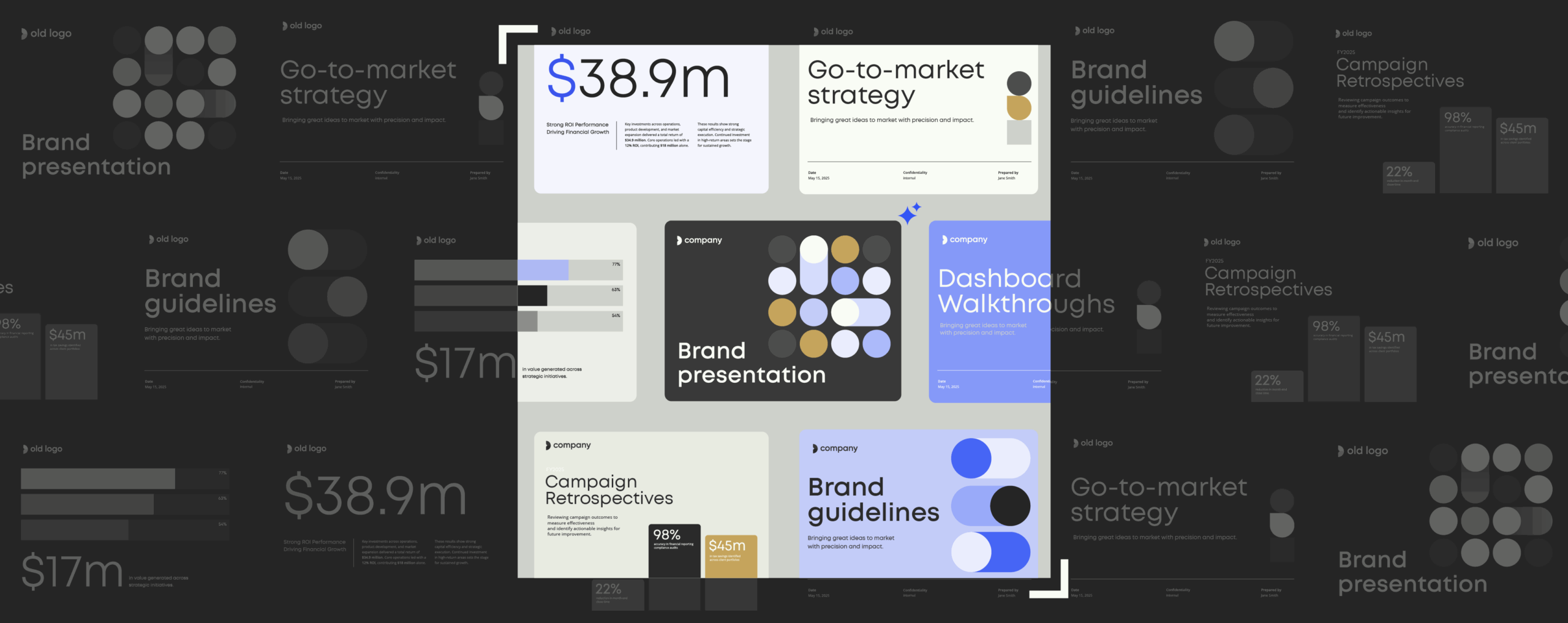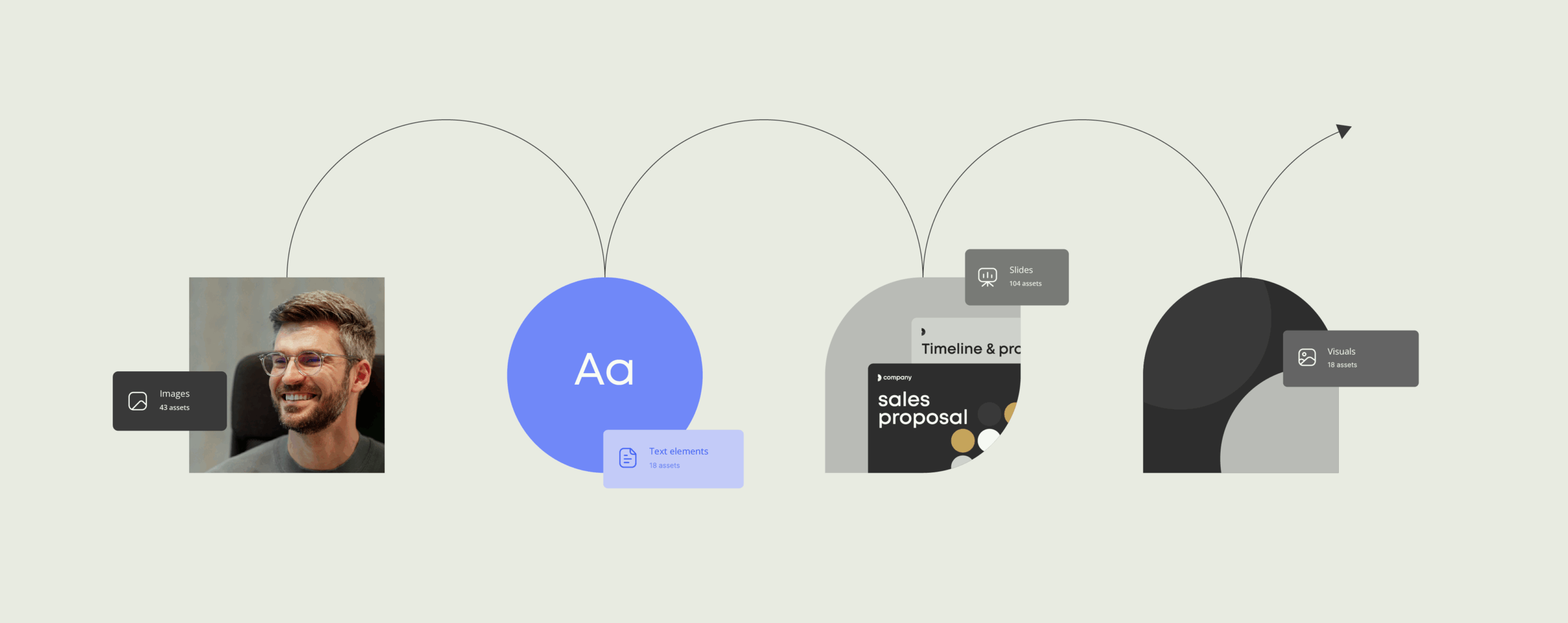Time for a change? The do’s and don’ts of successful rebranding

Brands are living entities.
They evolve with your business—adapting to customer demands, market shifts, and human input from all the people who work with it every day.
Your brand is a critical marketing tool and a reflection of your reputation, which means it can be either a key asset or a major liability.
So how do you know when it’s time for a rebrand?
If your brand feels out of sync with your company’s products, services, values, mission, or customers, this article is for you. We’ll walk you through the essentials: when to rebrand, how to do it right, what to avoid, and real-life examples of both successes and failures.
Knowing when the time is right
Rebranding is the process of reshaping how a company or product is perceived. It involves changes to the visual identity, messaging, or overall brand strategy to better align with business goals, market shifts, or customer expectations.
Trying to decide if now is the right time to rebrand? Here are some clear signs that your company could use a fresh new brand:
- Your brand feels outdated: If your logo, color palette, or overall look feels like it’s stuck in the past, it might be time for something new.
- You’re merging with another company: A merger or acquisition often calls for a new, unified identity that represents both businesses.
- Your audience has changed: If your target market has evolved, your brand needs to resonate with their new preferences, values, or expectations.
- You’ve had negative publicity: Rebranding can be a way to start fresh and show that your company is taking a new direction.
- Your business has outgrown its current identity: As your company expands its offerings or enters new markets, your brand might need to reflect this growth.
- Your messaging is inconsistent: If your visuals, tone, and message vary across platforms, a rebrand can unify and strengthen your identity.
- You’re launching a new product or service: A significant expansion in what you offer may require a brand refresh to signal the change.
Rebranding checklist: Covering all your brand bases

Considering a rebrand for your organisation?
Don’t miss a step in your new brand launch.
When going through a brand update, there’s a lot to keep in mind. Luckily, there are a number of helpful checklists to keep you on track and make sure you don’t forget to update anything essential.
Here’s our favorite rebranding checklist (yes, we wrote it), which shares the key elements of all successful rebranding campaigns.
In short, rebranding may require you to make strategic changes to your:
1. Name and key messaging
- Company and key product names
- Taglines, slogans, or other pieces of prominent messaging
2. Visual identity
- Logo, colors, fonts, and overall design style
- Brand style guide for consistency
3. Digital marketing materials
- Website and key landing pages
- New templates for presentations, reports, and proposals
- Updated social media profiles, banners, and email signatures
4. Physical marketing materials
- Business cards, brochures, advertisements, and packaging
- Decor and design for physical office or retail locations
5. Internal communication
- Training on how to use the new brand guidelines
- Easy-to-use repository of all new brand assets
6. External communication
- Notify customers and partners directly about the rebrand
- Make a public announcement to promote the news
7. Legal and administrative details
- Trademark your new logo and branding elements
- Update legal documents, contracts, and invoices with the new identity
Rebranding do’s and don’ts
Can’t-miss branding tips
Learn how to keep your brand consistent. Get ideas and examples to help your team create on-brand work with less effort.
Eight do’s to make your rebranding process a success
- Clarify why you need to rebrand: Is your current brand outdated, misaligned, or expanding? Write down your goals for rebranding and return to that again and again.
- Audit your current brand: Take a close look at your visual identity, messaging, and reputation. Are these still relevant? Keep what works and toss the rest.
- Market research for inspiration: Look at what’s trending in your industry and beyond. Review competitors, consumer behavior, and even unrelated industries for fresh ideas.
- Ask your customers for input: Your customers know your brand best. Listen to them and gather insights to help your rebrand resonate with their expectations.
- Get stakeholder buy-in: Involve investors, partners, and employees in your rebranding journey. Their support will ensure a smoother transition.
- Update all your assets: Work with creative professionals to design a fresh logo, color palette, typography, and updated marketing materials like your website, social media profiles, and digital assets.
- Plan a rollout strategy: Introduce your new brand across all channels in a phased approach. Update your website, social media, email campaigns, packaging, and signage to reflect the new identity.
- Monitor your results: Track how your audience responds to the rebrand. Measure brand awareness, customer feedback, and overall acceptance to fine-tune where needed.
Seven don’ts to avoid at all costs
- Erase your entire history: Keep elements of your brand’s legacy if they resonate with your audience. Loyalty often comes from familiarity.
- Rebrand without a strategy: Avoid jumping into a rebrand just because competitors are doing it. Your rebrand should have a strong, strategic purpose.
- Lose what makes you unique: Don’t compromise the qualities or values that set your brand apart from competitors.
- Try to do everything yourself: You may be the expert in your industry, product, or service area. But when it comes to a major rebrand, bring in branding professionals.
- Ignore your audience: Always consider your customers when rebranding. A brand that doesn’t connect with its audience is bound to miss the mark.
- Underestimate the effort: A successful rebrand requires time, resources, and careful planning. Cutting corners will only create inconsistencies.
- Forget to update everything: At the risk of creating an endless loop, we refer you back to the rebranding checklist above.
Branding done right: Three examples of a successful rebrand
Dunkin’ makes a bold move
When Dunkin’ Donuts became Dunkin’, the decision wasn’t just about trimming a name—it was about changing perception. Dunkin’ was reacting to a market shift: what their customers loved most was their coffee.
But the real brilliance of this rebrand was in what they didn’t change. Dunkin’ kept its iconic font and color palette, preserving the brand’s essence. Even the pink apostrophe cleverly hinted at what was “missing,” creating a subtle nod to the past.
This refresh aligned with how people already referred to the brand and resonated across cups, packaging, and marketing. It’s proof that sometimes, a small adjustment can have a big (positive) impact.
Mailchimp gets creative and colorful
Mailchimp, known for its email marketing tools, took its playful brand personality to the next level in its 2018 rebrand. Mailchimp revamped its mascot, Freddie, into a flatter, more adaptable design that accompanied their new sans-serif logotype.
Mailchimp’s real win, however, was in the details. The introduction of a quirky, hand-drawn illustration style breathed new life into the brand (and started a new trend that many other companies would try to emulate).
This rebrand wasn’t about fixing problems—it was about growing with their audience while staying true to their roots. By leaning into their creativity, Mailchimp showed how a brand can evolve without losing what makes it special.
Starbucks chooses to simplify
In 2011, Starbucks made a controversial choice: removing the words “Starbucks Coffee” from its logo. For a company that had built its reputation on coffee, the change felt risky. Critics (and fans) were quick to voice their disapproval, but Starbucks had a clear strategy.
The simplified logo signaled that Starbucks was no longer just about coffee. By focusing solely on their iconic siren, they opened the door to new product lines and a broader audience. Over time, the new design became instantly recognizable, even to skeptics.
Coupled with new brand features like a loyalty program and personalized cups, the rebrand helped Starbucks strengthen its connection with customers, and is ultimately considered a major brand success.
Rebrand fails: Three examples to avoid
Gap’s quick logo retreat
In 2010, Gap unveiled a new logo featuring bold black text with a small blue square. The response? Overwhelmingly negative. Customers called the design uninspired and generic. Social media erupted with mockery, and parody versions of the logo spread like wildfire.
Gap’s mistake was failing to involve its audience or explain the change. The backlash was so fierce that the company reverted to its original logo within a week. The lesson? Respect the emotional connection customers have with your brand’s identity.
PwC’s puzzling name change
When PricewaterhouseCoopers (aka PwC) rebranded as “Monday” in 2002, the move left customers scratching their heads. The new name had no link to the company’s legacy or services and felt random and jarring. It didn’t take long for PwC to revert to its original branding.
This case highlights the importance of continuity. A rebrand should build on your strengths, not disregard them.
Yahoo’s underwhelming logo launch
Yahoo’s 2013 rebranding effort generated plenty of buzz—but not for the right reasons. After a month-long campaign teasing a new logo, the final design was nearly identical to the old one. The lack of significant change left customers disappointed and confused.
The takeaway? If you’re going to build hype, deliver something impactful. A rebrand doesn’t have to be dramatic, but it does need to feel intentional and meaningful. And always deliver what you promise.
How Templafy helps companies rebrand and manage their new identity
Rebranding doesn’t stop at a new logo or updated messaging—it’s about making sure the new identity is used consistently across all communications. That’s where Templafy comes in.
Templafy helps businesses manage their brand assets and streamline document creation, ensuring every file reflects the updated brand identity.
Here are some examples of how Templafy has supported companies through rebrands:
- ERM used Templafy to centralize their brand templates, helping their global workforce communicate a consistent message and visual identity.
- Coloplast simplified the transition to their new brand, ensuring every document reflected their refreshed design and messaging.
- Ramboll ensured its new brand identity was quickly adopted across global teams, minimizing confusion and improving efficiency.
- Mercuri Urval rolled out its new identity seamlessly, saving time and ensuring their team always used the latest branded materials.
Next steps: The fresh start your business deserves
Rebranding is more than a fresh look—it’s a chance to redefine how your business connects with the world. With the right strategy, a rebrand can open new doors and inspire loyalty from both existing and new audiences.
As you move forward, think beyond logos and taglines; focus on how your brand tells a story that resonates. The journey to a rebrand is challenging, but when done right, it’s worth every effort.



